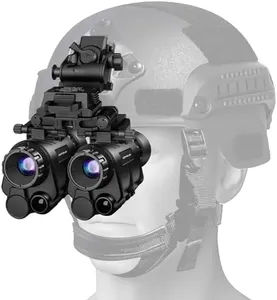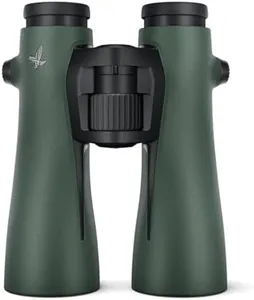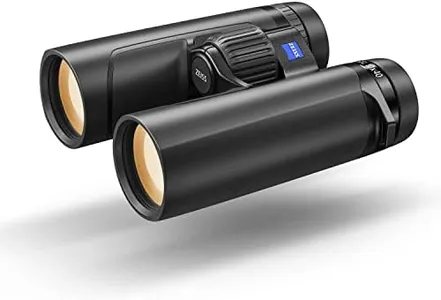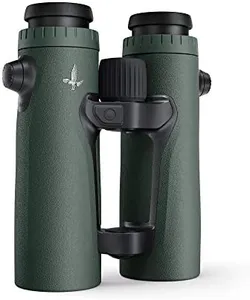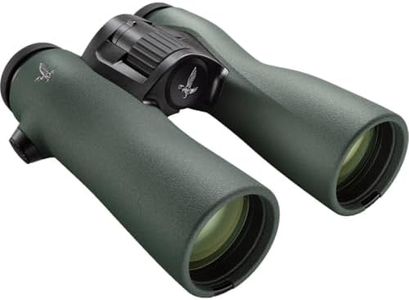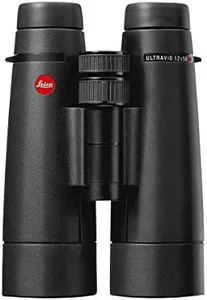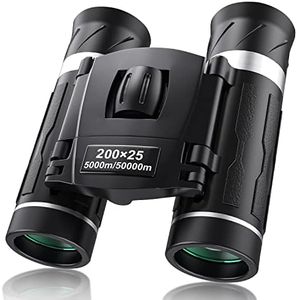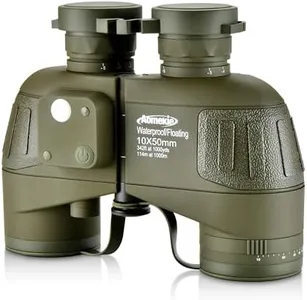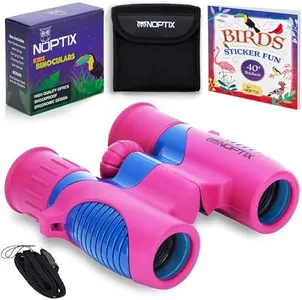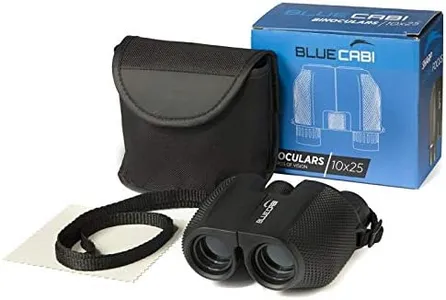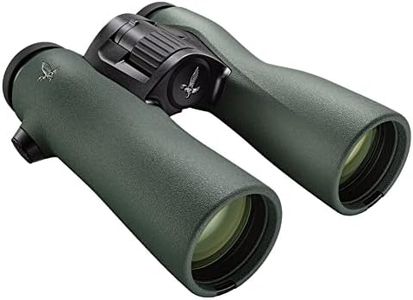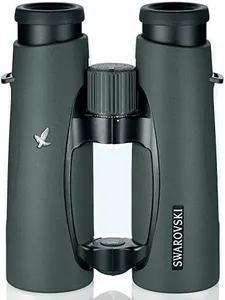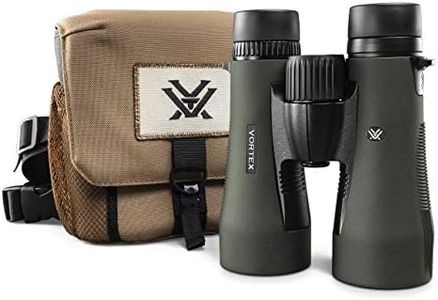10 Best Binoculars 2025 in the United States
Our technology thoroughly searches through the online shopping world, reviewing hundreds of sites. We then process and analyze this information, updating in real-time to bring you the latest top-rated products. This way, you always get the best and most current options available.

Our Top Picks
Winner
SWAROVSKI OPTIK NL Pure 14 x 52 Binoculars with Swarovision Technology (Green)
Most important from
138 reviews
The SWAROVSKI OPTIK NL Pure 14x52 binoculars are designed for serious outdoor enthusiasts, especially bird watchers and nature observers who need clear views at long distances, even in low light. With 14x magnification and a 52 mm objective lens, they capture plenty of light, making them excellent for dawn, dusk, or challenging lighting. The built-in Swarovision technology and field flattener lenses ensure sharp, distortion-free images, which is a major strength for detailed observation.
The unique wasp waist design helps the binoculars sit comfortably in your hands, which is helpful during extended use. They are also tripod mountable, a handy feature when steady viewing is necessary. At 3 pounds and about 7 x 5 inches in size, they are heavier and bulkier than smaller models, which might make them less convenient for casual or all-day carry.
These binoculars excel in image quality and low-light use, making them ideal for dedicated users who prioritize performance and don’t mind the extra weight.
Most important from
138 reviews
ZEISS SFL Binoculars Lightweight, Compact, Waterproof, Ultra-High Definition Coated Glass for Bird Watching, and Hunting for Twilight and Low Light Wildlife Observation with SmartFocus, Black (10x40)
Most important from
7 reviews
The ZEISS SFL binoculars are designed for nature lovers who want high-quality views during bird watching, hunting, or low-light wildlife observation. They offer 8x magnification with a 40mm lens, which balances good zoom with a bright, sharp image. These binoculars stand out with their 90% light transmission and ZEISS T* coating, providing clear and bright views even at twilight or in challenging light. The FieldFlattener technology helps keep the image sharp across the entire field of view, so you won’t lose detail at the edges.
They are compact and lightweight, thanks to a magnesium body, making them easier to carry on long trips without feeling bulky. The design is also waterproof and fog-resistant with a special LotuTec coating, ensuring good visibility in wet weather or humid conditions. With a weight of about 1.4 pounds, they are reasonably portable but not the lightest available. While the 40mm lens is a bit smaller compared to some binoculars that use 42mm or 50mm lenses, it still performs well for most outdoor uses.
These binoculars provide dependable, sharp images in a compact, weatherproof package, especially if you prioritize quality optics and ease of use during dawn or dusk outings. If you need stronger magnification or a larger lens for maximum light gathering, you might want to consider other options.
Most important from
7 reviews
SWAROVSKI OPTIK 10x42 EL Laser Rangefinder Binoculars with Tracking Assistant, SWAROVISION Technology, and App Support (Green)
The SWAROVSKI Optik 10x42 EL Laser Rangefinder Binoculars stand out in the hunting binocular category, primarily due to their high-quality optics and integrated rangefinder features. With a magnification of 10 and a 42mm objective lens diameter, they offer a bright and clear field of view, essential for spotting game from a distance. The binoculars also feature SWAROVISION technology, ensuring sharp, contrast-rich images, which is a significant strength for hunters needing precise visuals in varying light conditions.
Another highlight is their personalized ballistics capability. By connecting to a smartphone app, you can customize settings according to your specific needs, making these binoculars incredibly useful for serious hunters. The integrated Tracking Assistant is a great addition, simplifying the process of tracking your target after a shot, which can be crucial in hunting scenarios.
However, there are a few drawbacks to consider. The binoculars are somewhat heavy at 5.75 pounds, which might be cumbersome for extended use or long treks in the field. Additionally, while they are packed with features, the complexity of some functions may not be ideal for novice users or those who prefer simpler binoculars for casual use. Furthermore, the absence of included batteries might be a minor inconvenience for some buyers. In terms of durability, these binoculars are waterproof and fog-proof, making them suitable for use in various weather conditions, which is another strength. Their compact design contributes positively to portability, despite the weight. For anyone involved in serious hunting or outdoor activities requiring precise measurements and tracking capabilities, these binoculars could be a worthwhile investment, while casual users might find better value in lighter, more straightforward options.
